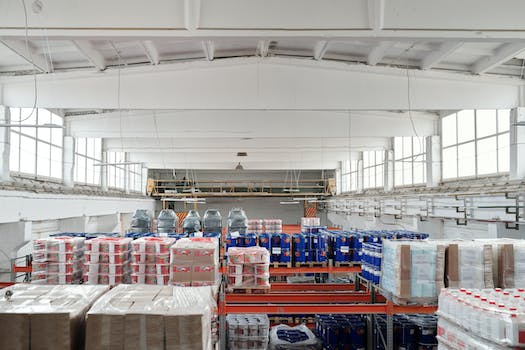-
Table of Contents
- Introduction
- How Caching Can Improve Your Website’s Performance and Speed
- Exploring the Different Types of Caching and Their Benefits
- Understanding the Benefits of Caching for Web Hosting
- The Pros and Cons of Implementing Caching for Web Hosting
- How to Optimize Your Website’s Performance with Caching Strategies
- Conclusion
and Performance
“Caching: The Key to Faster Web Hosting and Enhanced Performance!”
Introduction
Caching is an important part of web hosting, as it helps to improve the speed and performance of websites. Caching is a process of storing frequently accessed data in a temporary storage location, so that it can be quickly retrieved when needed. By caching web content, web hosting providers can reduce the amount of time it takes for a website to load, as well as reduce the amount of bandwidth used. This can result in a better user experience, as well as improved search engine rankings. In this article, we will discuss the role of caching in web hosting and how it can help to boost speed and performance.
How Caching Can Improve Your Website’s Performance and Speed

Caching is a powerful tool for improving the performance and speed of your website. It is a process of storing data in a temporary storage area, so that it can be quickly accessed when needed. By caching data, your website can respond faster to user requests, resulting in a better user experience.
Caching can be used to store static content such as images, HTML, CSS, and JavaScript files. This means that when a user visits your website, the browser will not have to download these files every time. Instead, the cached version of the files will be served, resulting in faster loading times.
Caching can also be used to store dynamic content such as database queries. By caching the results of database queries, your website can respond faster to user requests. This can be especially useful for websites that have a lot of database queries, as it can significantly reduce the amount of time it takes to process the queries.
Caching can also be used to store session data. This means that when a user visits your website, the browser will not have to re-authenticate the user every time. Instead, the cached version of the user’s session data will be served, resulting in faster loading times.
Finally, caching can be used to store user preferences. This means that when a user visits your website, the browser will not have to re-load the user’s preferences every time. Instead, the cached version of the user’s preferences will be served, resulting in faster loading times.
Overall, caching is a powerful tool for improving the performance and speed of your website. By caching static and dynamic content, session data, and user preferences, your website can respond faster to user requests, resulting in a better user experience.
Exploring the Different Types of Caching and Their Benefits
Caching is a process of storing data in a temporary storage area, usually in the form of memory, to reduce the time it takes to access data from a slower storage device. Caching is used in many areas of computing, including web browsers, databases, and operating systems. It can be used to improve the performance of applications and websites, as well as reduce the amount of data that needs to be stored.
There are several different types of caching, each with its own benefits. Here, we’ll explore the different types of caching and the benefits they offer.
Browser Caching
Browser caching is a type of caching that is used to store web page elements, such as images, scripts, and stylesheets, in the browser’s cache. This allows the browser to quickly access the elements when a user visits the same page again, reducing the amount of data that needs to be downloaded from the server. This can significantly improve the performance of a website, as well as reduce the amount of bandwidth used.
Database Caching
Database caching is a type of caching that is used to store data from a database in memory. This allows the database to quickly access the data when it is needed, reducing the amount of time it takes to query the database. This can significantly improve the performance of applications that rely on databases, as well as reduce the amount of data that needs to be stored in the database.
Operating System Caching
Operating system caching is a type of caching that is used to store data in memory, such as files and programs. This allows the operating system to quickly access the data when it is needed, reducing the amount of time it takes to access the data. This can significantly improve the performance of applications and reduce the amount of data that needs to be stored on the hard drive.
In-Memory Caching
In-memory caching is a type of caching that is used to store data in memory, such as objects and variables. This allows applications to quickly access the data when it is needed, reducing the amount of time it takes to access the data. This can significantly improve the performance of applications and reduce the amount of data that needs to be stored in memory.
As you can see, there are several different types of caching, each with its own benefits. By understanding the different types of caching and the benefits they offer, you can make informed decisions about which type of caching is best for your application or website.
Understanding the Benefits of Caching for Web Hosting
Caching is an important part of web hosting, and it can have a significant impact on the performance of your website. In this blog post, we’ll discuss the benefits of caching and how it can help improve your website’s performance.
Caching is a process that stores data in a temporary storage area, allowing it to be quickly accessed when needed. This can be especially beneficial for web hosting, as it can reduce the amount of time it takes for a website to load. By caching data, web hosting providers can reduce the amount of time it takes for a website to load, as well as reduce the amount of bandwidth used.
Caching can also help improve the security of your website. By caching data, web hosting providers can reduce the amount of time it takes for a website to load, as well as reduce the amount of bandwidth used. This can help protect your website from malicious attacks, as attackers will have less time to access your data.
Caching can also help improve the scalability of your website. By caching data, web hosting providers can reduce the amount of time it takes for a website to load, as well as reduce the amount of bandwidth used. This can help ensure that your website can handle more traffic without slowing down.
Finally, caching can help improve the reliability of your website. By caching data, web hosting providers can reduce the amount of time it takes for a website to load, as well as reduce the amount of bandwidth used. This can help ensure that your website is always available and running smoothly.
Overall, caching is an important part of web hosting, and it can have a significant impact on the performance of your website. By caching data, web hosting providers can reduce the amount of time it takes for a website to load, as well as reduce the amount of bandwidth used. This can help improve the security, scalability, and reliability of your website.
The Pros and Cons of Implementing Caching for Web Hosting
Caching is a popular technique used to improve the performance of web hosting services. It involves storing frequently accessed data in a temporary storage area, so that it can be quickly retrieved when needed. This can help reduce the amount of time it takes to access web pages, as well as reduce the amount of bandwidth used.
However, there are both pros and cons to implementing caching for web hosting. Let’s take a look at some of the advantages and disadvantages of using caching for web hosting.
Pros
1. Improved Performance: Caching can significantly improve the performance of web hosting services. By storing frequently accessed data in a temporary storage area, it can be quickly retrieved when needed, reducing the amount of time it takes to access web pages.
2. Reduced Bandwidth Usage: Caching can also help reduce the amount of bandwidth used. By storing data in a temporary storage area, it can be quickly retrieved when needed, reducing the amount of data that needs to be transferred.
3. Cost Savings: Caching can also help reduce the cost of web hosting services. By reducing the amount of bandwidth used, it can help reduce the amount of money spent on hosting services.
Cons
1. Security Risks: Caching can also introduce security risks. By storing data in a temporary storage area, it can be accessed by unauthorized users, potentially leading to data breaches.
2. Increased Complexity: Caching can also increase the complexity of web hosting services. It requires additional hardware and software to be installed and configured, which can be time-consuming and expensive.
3. Outdated Data: Caching can also lead to outdated data being served to users. If the data stored in the cache is not regularly updated, users may be served outdated information.
Overall, caching can be a useful tool for improving the performance of web hosting services. However, it is important to consider the pros and cons before implementing caching for web hosting. By weighing the advantages and disadvantages, you can make an informed decision about whether or not caching is the right solution for your web hosting needs.
How to Optimize Your Website’s Performance with Caching Strategies
Caching is an essential part of website optimization. It helps to reduce the load on your server, improve the speed of your website, and reduce the amount of bandwidth used. Caching strategies can be used to improve the performance of your website in a variety of ways.
What is Caching?
Caching is a process of storing data in a temporary storage area, such as a hard drive or memory, so that it can be quickly accessed when needed. When a user visits your website, the web server retrieves the requested data from the cache instead of generating it from scratch. This reduces the amount of time it takes to load the page, resulting in a faster website.
Types of Caching
There are several types of caching strategies that can be used to improve the performance of your website. These include browser caching, server-side caching, and content delivery networks (CDNs).
Browser Caching
Browser caching is a type of caching that stores static files, such as images, CSS, and JavaScript, in the user’s browser. This allows the browser to quickly access the files without having to download them from the server each time.
Server-Side Caching
Server-side caching is a type of caching that stores dynamic content, such as HTML pages, in the server’s memory. This allows the server to quickly access the content without having to generate it from scratch each time.
Content Delivery Networks (CDNs)
CDNs are networks of servers located around the world that store static files, such as images, CSS, and JavaScript. When a user visits your website, the CDN will serve the files from the closest server, resulting in faster loading times.
How to Implement Caching Strategies
Implementing caching strategies can be done in a variety of ways. For browser caching, you can use a plugin such as W3 Total Cache or WP Super Cache. For server-side caching, you can use a caching plugin such as WP Rocket or WP Fastest Cache. For CDNs, you can use a service such as Cloudflare or Amazon CloudFront.
Conclusion
Caching is an essential part of website optimization. It helps to reduce the load on your server, improve the speed of your website, and reduce the amount of bandwidth used. There are several types of caching strategies that can be used to improve the performance of your website, including browser caching, server-side caching, and content delivery networks (CDNs). Implementing these strategies can be done in a variety of ways, such as using plugins or services. By taking advantage of caching strategies, you can ensure that your website is running at its best.
Conclusion
In conclusion, caching plays an important role in web hosting, as it helps to improve the speed of websites and reduce the load on the server. Caching can be used to store frequently accessed data, such as images, HTML, and JavaScript, which can be quickly retrieved when needed. This helps to reduce the amount of time it takes for a website to load, resulting in a better user experience. Additionally, caching can help to reduce the amount of bandwidth used, which can help to reduce hosting costs.















